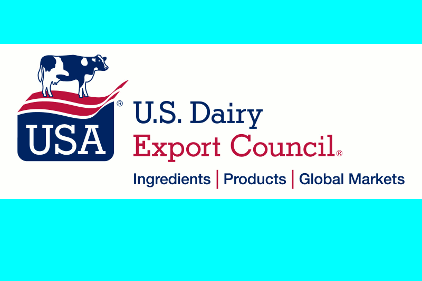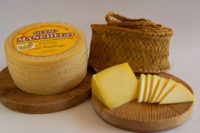Exports
U.S. dairy suppliers were on track to ship $5 billion in exports in 2012
Through the first 10 months of 2012, the volume of major products increased a combined 5.5 percent to more than 2.8 billion lbs.

 At year-end, with November and December data still unreported, U.S. dairy suppliers were on track to ship $5 billion in exports for the first time. Through the first 10 months of 2012, the volume of major products increased a combined 5.5 percent to more than 2.8 billion lbs. Although growth had softened in recent months, U.S. cheese and whey protein concentrate were poised to shatter volume records, and nonfat dry milk/skim milk powder was tracking at or near record levels.
At year-end, with November and December data still unreported, U.S. dairy suppliers were on track to ship $5 billion in exports for the first time. Through the first 10 months of 2012, the volume of major products increased a combined 5.5 percent to more than 2.8 billion lbs. Although growth had softened in recent months, U.S. cheese and whey protein concentrate were poised to shatter volume records, and nonfat dry milk/skim milk powder was tracking at or near record levels.
For the second consecutive year, U.S. export volume accounted for more than 13 percent of total milk solids produced in the United States.
“Such numbers would represent a solid performance in any year. But the fact that the industry posted them in 2012 is a clear indication of the United States’ growing maturity as a world dairy player,” says Tom Suber, president, U.S. Dairy Export Council (USDEC). USDEC, funded primarily by U.S. dairy farmers through their checkoff investment, is the leading organization in building U.S. overseas market development and sales.
In its annual review of U.S. dairy export performance, USDEC says that by any measure, 2012 held more than its share of dairy business challenges: the devastating U.S. drought, unfavorable commodity pricing for much of the year, historically high global milk production in the first half, political upheaval and slowing economic growth around the world.
“U.S. dairy suppliers in the past might have retreated from international business under these conditions. Last year, they not only fought to defend hard-won market share, they invested in future growth,” says Suber. “They earmarked considerable dollars specifically to make products demanded by global buyers, adapted their business structures and invested in overseas offices and dedicated export personnel.”
It paid off, as emerging market demand proved as resilient as U.S. suppliers’ resolve to serve to world. China, Southeast Asia, the Middle East, Mexico and Latin America soaked up the abundant milk supply produced in the first six months of 2012 while simultaneously depleting U.S. and European stocks.
The year was in fact peppered with potentially positive developments: 2012 marked the culmination of free trade agreements with Colombia, Panama and South Korea, the addition of Canada to Trans-Pacific Partnership talks, the formation of the Consortium for Common Food Names to fight European threats to restrict cheese names, changes in use of dairy proteins in food aid programs that open the door to new commercial opportunities for U.S. suppliers, the continued boom of infant formula and dawn of dairy ingredient opportunity in medical nutrition, and significant additions to the ever-expanding body of research demonstrating the nutritional and functional advantages of dairy ingredients.
“The checkoff-funded Globalization Committee of the Innovation Center for U.S. Dairy recommended the United States pursue a goal of consistent global supplier as the best path forward for long-term industry health,” says Suber. “This past year reinforced the objectives of the committee’s work plan to continue with programs to better accommodate U.S. dairy policy and practices to ensure that U.S. dairy producers and processors remain competitive for the long-term, even as new dairy suppliers emerge to meet ever-increasing global demand.”
SOURCE: U.S. Dairy Export Council
Listen to the webinar "USDEC's Global Dairy Outlook: 2013" presented in December 2012 in the Dairy Foods archives.
Looking for a reprint of this article?
From high-res PDFs to custom plaques, order your copy today!






